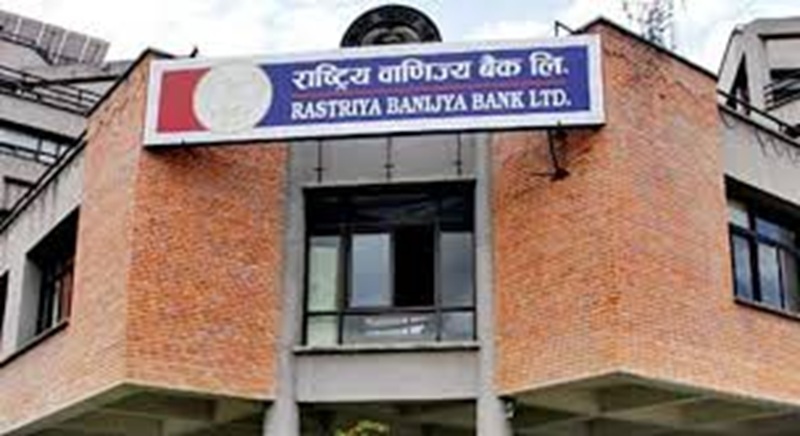Rastriya Banijya Bank’s Financial Resurgence
14th August 2025, Kathmandu
Rastriya Banijya Bank Limited (RBB), one of Nepal’s largest and most prominent public sector banks, has delivered a truly remarkable performance in the last fiscal year.
RBB’s Finances Show Improvement
The bank reported a net profit of NPR 3.81 billion, marking a substantial 49.53% increase from the previous year’s NPR 2.55 billion. This impressive growth is more than just a number; it signals a major turnaround in the bank’s operational efficiency and financial health. This success is particularly notable given the challenging macroeconomic environment, which has tested the resilience of many of its competitors.
The financial report reveals a strategic and effective management approach, with strong growth across all major performance indicators. From a significant rise in core interest income to a major milestone in its distributable profit, RBB’s results position it as a beacon of stability and growth in Nepal’s banking sector.
RBB’s Financial Resurgence: The Story of Operational Excellence
The primary driver of RBB’s profit surge was a robust increase in its core earnings. The bank’s interest income, the revenue generated from its lending activities, grew to NPR 10.8 billion from NPR 10.03 billion, demonstrating effective lending strategies and a healthy loan portfolio. This growth in interest income, combined with an increase in non-interest earnings, led to a surge in the bank’s total revenue, which reached NPR 12.84 billion. This performance highlights the bank’s ability to maintain a strong market position and attract new customers despite intense competition.
Furthermore, a key indicator of a bank’s operational health is its operating profit, which represents the profit generated from its core business operations before taxes and other non-operating expenses. RBB’s operating profit jumped by an impressive 31.59%, from NPR 4.09 billion to NPR 5.38 billion. This growth underscores the bank’s success in optimizing its costs and enhancing its income streams, leading to a much more efficient business model. The bank’s effective cost control and robust revenue generation are the twin pillars that supported its strong performance this fiscal year.
The Distributable Profit Milestone: A Return to Shareholder Value
Perhaps the most significant and long-awaited highlight of the report is the monumental turnaround in the bank’s distributable profit. In the previous fiscal year, RBB had a negative distributable profit of NPR 1.22 billion. This meant that despite making a profit, the bank could not distribute dividends to its shareholders because it had to first offset accumulated losses from prior years. However, in the most recent fiscal year, the bank’s distributable profit turned positive, reaching NPR 30.34 million.
This achievement is a major milestone for RBB. It not only confirms the bank’s improved profitability but also signifies that it has overcome its historical financial challenges. While the amount is modest, having a positive distributable profit is a crucial first step towards potential dividend distributions to its shareholders, including the Government of Nepal. For a public sector bank, this signals a return to a position where it can provide tangible returns to its owners, reinforcing its role as a stable and profitable state-owned enterprise.
Strengthening the Foundation: Asset Quality and Capital Position
A key factor behind RBB’s success is its enhanced focus on asset quality and risk management. The bank successfully reduced its non-performing loan (NPL) ratio from 4.28% to 3.59%. A lower NPL ratio indicates a healthier loan portfolio and a decreased risk of loan defaults. This improvement shows that the bank’s credit management policies are working effectively and that it is proactively managing its risk exposure, which is critical for long-term stability.
The bank’s financial stability is further supported by a remarkably strong capital base. RBB’s paid-up capital stands at NPR 15.63 billion, and its reserves have swelled to NPR 37.47 billion. The high reserve fund, one of the largest in the industry, provides a robust buffer against unforeseen economic shocks and supports the bank’s future expansion plans. The bank also reported a significant increase in its Earnings Per Share (EPS), which rose from NPR 16.32 to NPR 24.41, reflecting strong returns for investors and a more valuable institution.
In conclusion, Rastriya Banijya Bank’s financial results for the last fiscal year are a clear testament to its strong operational capabilities and sound financial management. The combination of a strong net profit, a positive distributable profit, a reduced NPL ratio, and a solid capital base positions RBB as a formidable and reliable force in the Nepalese banking sector. The bank’s commitment to sustainable growth and its ability to turn around its financial performance signal a confident and prosperous future.
For More: RBB’s Finances Show Improvement








